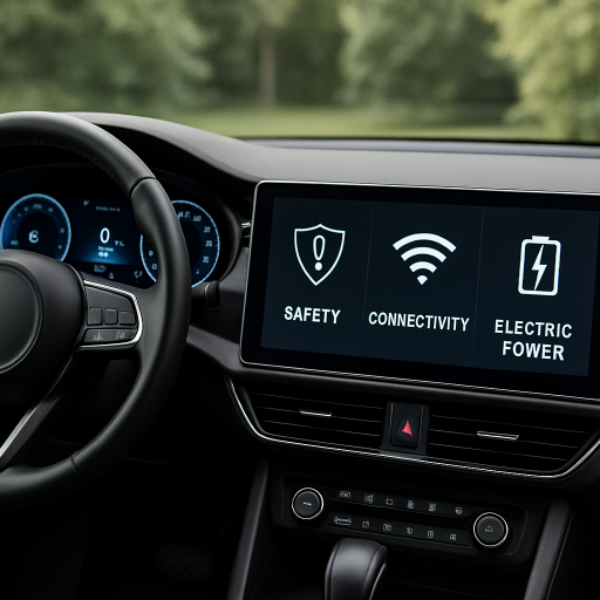How to Budget for Auto Parts When Buying a New Car

Key Takeaways:
- Planning an auto parts budget is crucial when purchasing a new car.
- Understanding standard maintenance and replacement costs helps manage expenses.
- Knowing your vehicle’s specific needs can prevent unexpected financial burdens.
Table of Contents:
- Introduction
- Researching Necessary Parts
- Estimating Auto Parts Costs
- Creating a Realistic Budget
- Tips for Cost-Effective Buying
- Budgeting for Emergencies
- Conclusion
Introduction
The thrill of buying a new car is a remarkable experience. The allure of being the first owner, driving a zero-mileage vehicle off the lot, and understanding its various features is truly immense. However, the purchase is just a part of the journey. Planning for ongoing expenses is crucial to sustain this excitement and ensure a smooth ownership experience, especially concerning auto parts. These components are integral to your vehicle’s functionality and lifespan, making budgeting for them vital. Understanding potential costs will enable you to prepare better, avoid unexpected financial stress, and keep the vehicle performing at its best. This detailed guide will equip you with practical strategies to budget for auto parts and tips for making informed purchases.
Researching Necessary Parts
Before setting foot in the dealership, conducting thorough research into the auto parts your future car may require over time is beneficial. Understand that every vehicle, regardless of its make or model, has components needing frequent replacement. This includes consumables like oil filters, air filters, spark plugs, windshield wipers, and tires that wear down as you rack up the miles. Familiarizing yourself with these parts prepares you for future expenses and lets you make proactive decisions that align with your budget. By familiarizing yourself with local suppliers, such as those offering auto parts Sarasota, you can ensure you’re getting quality parts designed to fit your vehicle perfectly.
Estimating Auto Parts Costs
Having a clear picture of what parts you might need is just the beginning; estimating their costs is where the actual budgeting process begins. Leverage online platforms, local dealerships, and auto shops to gather data. Prices vary based on brand, part quality, and regional demand. Labor costs can also vary if installation is required. Collaborate with vendors and mechanics to create an informed price list. For instance, sourcing reasonably priced yet reliable options like car parts Sarasota ensures you have clarity on what financial commitments lie ahead, aiding in crafting a comprehensive and realistic budget.
Creating a Realistic Budget
With a clear understanding of potential costs, it’s time to create a budget that aligns with your financial capabilities. Start by listing anticipated expenses for regular maintenance parts, such as oil, filters, and tires, along with their estimated prices. Consider setting aside funds for regular maintenance and unexpected repairs to cover unforeseen costs, such as brake system replacements or electrical issues. Your budget should serve as a living document that needs revisiting and adjustments as market conditions or your vehicle’s needs change. Regularly updating your budget ensures you remain financially prepared, no matter what vehicular challenges arise.
Tips for Cost-Effective Buying
Once a solid budget is in place, the real test is sticking to it while securing quality parts. Here are some strategies to help ensure cost-effective purchases:
- Shop Around: Various suppliers and online platforms offer different deals. Comparing these options can reveal competitive prices.
- Buy in Bulk: Consumables like engine oil and filters might be cheaper when purchased in larger quantities.
- Look for Deals: Take advantage of sales, promotions, or seasonal discounts from dealerships or online retailers.
- Consider Aftermarket Parts: Aftermarket parts may be less expensive yet offer comparable quality to OEM parts. However, ensure any non-OEM parts are compatible with your specific vehicle model.
Budgeting for Emergencies
Even the most meticulously crafted budgets can be derailed by unexpected automotive emergencies. Whether it’s a sudden engine breakdown, transmission failure, or minor yet essential fixes, having a contingency plan to address them is crucial. Allocate funds for an emergency reserve to cover unexpected expenses, ensuring you’re not caught off guard. Regularly contribute to this fund so that when unforeseen events occur, you’re ready to tackle them head-on without disrupting your carefully structured budget. With a robust emergency fund, you can handle unexpected expenses calmly and efficiently, keeping your financial health intact.
Conclusion
Budgeting for auto parts is a critical yet often overlooked aspect of new car ownership. By staying informed about potential parts needs, accurately estimating their costs, and creating a dynamic, adaptable budget, you can transform the ownership experience into a positive one. Coupled with intelligent purchasing strategies and an emergency fund for unexpected events, you’ll ensure your investment remains a privilege and a sustainable joy. A proactive approach leads to a seamless ownership journey, safeguarding your car’s mechanical integrity and financial comfort.
FOLLOW US ON FACEBOOK
RECENT POSTS
TAGS
About The Memory Hole
You've reached TheMemoryHole.org! A diverse lifestyle blog with content on a variety of different topics to help you define and live the life you want to live! Thanks for stopping by!
Copyright © The Memory Hole. All rights reserved.







